
EDITOR’S NOTE: This post is part of the Expert Exchange series, an editorially directed and expert-driven platform for information and discussion around leading-edge building science principles and projects. The fourth quarter topic—made possible with support from our sponsor*, Rockwool—is “Choosing Products and Materials for a Green Home.” The series will culminate with a webinar panel discussion among contributing experts on Dec. 7 at 6pm ET. Click to register.
When choosing insulation there are a few different attributes we can use to assess them. I always look at offgassing of volatile organic compounds (VOCs), as this is an immediate concern to many people. We also need to consider nonvolatile chemicals and at what stage in the product’s lifecycle they might be a concern. For example, low levels of metals, borates, and natural flame retardants like ammonium sulfate may be a concern only during production and installation, whereas more toxic flame retardants like those used in foam-board insulation can be a hazard at every stage of a product’s lifespan. Even if they are not a hazard when the insulation is in place, either because the flame retardant is well bonded to the polymer or because it’s on the exterior, we still have to think of its disposal at the end of its life.
Another aspect that comes into play—with foam boards in particular—is the product’s global warming potential (GWP). Fortunately, there have been moves of late to reduce the high GWP and toxicity levels of flame retardants. And, lastly, we should look at a product’s recycled content, and its ability to be recycled or composted at the end of its life. What follows is a detailed dive into 12 insulation types and the qualities that make them a good selection for people and planet.
Batt insulation
There are lots of options for batt insulation, which affords us the ability to be picky.
Mineral wool
Mineral wool is made of basalt stone and slag from steel and/or copper, a resin binder, and a little mineral oil. It is my top choice for batt insulation because it offgasses quickly and completely, it’s easy to source, and the benefits of its compression fit are not outweighed, in my opinion, by the benefits of other batt materials.
Rockwool is the most popular brand of mineral wool. Rockwool Comfortbatt, Safe ’n’ Sound, and ComfortBoard all contain <3% phenol-formaldehyde, <1% starch, and <0.2% mineral oil (source). The company says that “during manufacturing, the [formaldehyde] binder is cured at very high temperatures leaving only trace amounts in the product after it is produced” (FAQs). I do find the levels of formaldehyde in the product to be extremely low and what remains offgasses quickly (and completely) once the packages are opened. They also have a formaldehyde-free product, AFB Evo, which has a starch-based binder. Unfortunately, this product is harder to source than their standard batts.
The pre-consumer recycled slag used in Rockwool’s batts comes from the steel and copper industries and makes up 16% to 40% of the product. Steel slag can contain trace amounts of potentially toxic elements such as Ti, Al, Ca, and Cr. In an email, Rockwool said its slag doesn’t contain cadmium, chromium, lead, mercury, or silver (they didn’t mention aluminum or titanium). It’s not something I’m worried about once it’s behind an air barrier, but there could be a risk to installers who handle this every day.
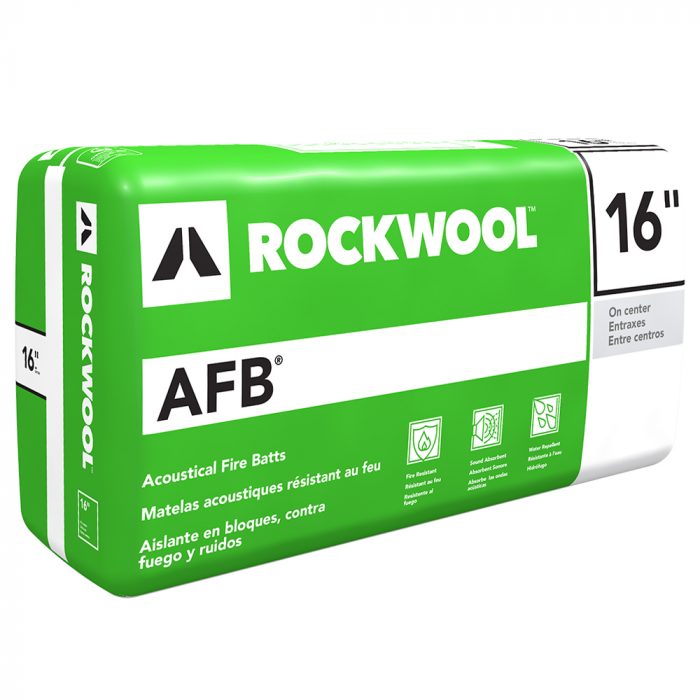
Also, Rockwool’s Ontario location uses the highest amount of recycled material of any of its facilities. It can be recycled into new mineral wool insulation, where the facilities to do so exist.
Another common brand is Thermafiber from Owens Corning. They offer a regular phenol-formaldehyde-bonded line and a formaldehyde-free line (marked “FF”) that is made with a dextrose-based binder. In terms of its environmental profile, the use of up to 40% recycled material is a plus.
Fiberglass
Fiberglass insulation can be bonded with phenol-formaldehyde, acrylic, or bio-based starch. The shift away from formaldehyde binders in fiberglass batt insulation began in 2002 and was complete by 2015 (source). Knauf lists their binder as starch, Owens Corning uses corn starch, and Certainteed’s binder is listed as sugars; Johns Manville is the only brand I know of to use an acrylic polymer binder.
Other ingredients Knauf lists include ammonium sulfate (fire retardant), mineral oil (dedusting), and silane. Certainteed lists citric acid, mineral oil, silane, and an undisclosed additive in their EPD. Owens Corning lists vegetable oils, sodium lignosulfonate, silane, and an undisclosed surfactant.
Fiberglass insulation has very low offgassing, and some of the most chemically sensitive folks have done well with the starch-based brands. Fiberglass also has recycled content in the form of both pre-and post-consumer recycled glass. Some areas do accept fiberglass insulation at a recycling facility, but this is not common.
As a side note, it is reassuring that the primary option used in lower-end homes isn’t too bad in terms of both short-term exposure to offgassing and long-term impacts.
Wool
Real sheep’s wool insulation is another eco-friendly option. This will appeal most to clients who want to go as natural and sustainable as possible with their build. It does have a natural odor and the main additive is boric acid to ward off pests.
Havelock Wool is the most established brand. They make batts and a loose fill. They don’t use any synthetic fibers or binders; it’s just wool and boric acid, which makes this the purest brand of batt insulation. Havelock Wool is biodegradable and compostable. That said, there are concerns with borax/boric acid if you inhale it, ingest it, or absorb it. But once it is behind an air barrier, I would not be concerned about it. Other manufacturers include Oregon Shepard, which uses recycled wool and adds borate, sodium carbonate, and casein; and Wool Life USA, which makes wool insulation treated with the chemical pesticide permethrin.
Cotton
UltraTouch products used to be made from pre-consumer denim scraps, but they have moved to recycled denim and other cotton sources now. It’s about 80% post-consumer recycled fibers, and it is also recyclable. It contains boric acid, ammonium sulfate (fire retardant), and an olefin binding fiber, which is similar to rayon. It can be used between wood studs, though it does not hold up well in ceilings/between floor joists, especially compared to mineral wool.
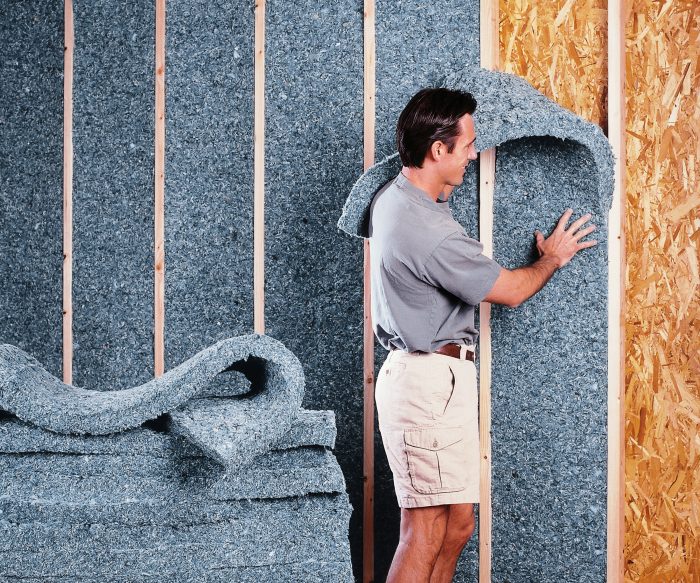
I have used this insulation type and there is nothing objectively wrong with it, but it isn’t as good as other options, in my opinion, because it doesn’t fit tight in wall cavities. I worry about its ability to resist mold if it gets wet, and it does have a slight odor.
Hemp
Hemp insulation is the newest alternative insulation in the North American market, but it has been used for much longer in Europe. Brands include Thermo-Hemp, a European manufacturer and one of the first hemp insulation brands. Their products are made of hemp and jute. In the U.S., there’s HempWool from Hempitecture, which is 90% hemp and 10% polyester fiber. There is also the MEM brand out of Canada, which is 88% hemp and 12% polyester.

The hemp insulation industry has been rocky, as evidenced by the fact that the following companies have gone out of business in the last few years: NatuHemp by Black Mountain Insulation, Sunstrand Batt, and Nature Fibers Inc.
Hemp has good specs when it comes to environmental sustainability, and as an insulation material it has promise. But the shaky market history means it hasn’t proven itself yet, and the polyester makes it nonbiodegradable.
Blown-in
My top picks for blown-in insulation are mineral wool and sheep’s wool even though these are less common choices. Both are two-ingredient products with no formaldehyde or flame retardants. Cellulose and fiberglass both have several chemical additives but low offgassing.
Cellulose
Blown-in cellulose insulation is made with post-consumer newspaper. It always contains boric acid as a flame retardant and pest deterrent, and sometimes has ammonium sulfate as a fire retardant, as well as mineral oil for a dedusting agent, plus other ingredients based on the brand. Newspapers are made with “soy-based” inks, but they contain many other chemicals apart from soy that can be bothersome to sensitive people.

The GreenFiber brand is 85% recycled newspaper. They have a Declare Label that lists boric acid, sodium pentaborate pentahydrate (another borate-based compound), ammonium sulfate (flame retardant), mineral oil (dedusting), monoammonium phosphate (flame retardant), calcium carbonate, and corn starch.
Ecocell makes cellulose insulation in batt form that is a mix of cellulose and cotton. It also contains PET as the binder, boric acid, sodium polyborate, and ammonium sulfate.
Cellulose production can use up to 10 times less embodied energy than fiberglass insulation, plus the use of recycled materials diverts waste away from landfills and adds to its sustainability credentials. However, it is not recyclable and though it is technically compostable, the additives may mean that’s not a good idea for residential composting.
Cellulose is not at the top of my list because of all the additives—especially if someone is very sensitive to offgassing—but I wouldn’t rule it out when a blown-in material is needed for walls. The additives are mainly a risk when in dust form.
Fiberglass
Blown-in fiberglass brands that I have looked at contain borates, soda ash, lime, siloxanes/silicates/silane, mineral oil, and an unknown anti-static additive. Owens Corning carries an unbonded loose-fill product and Knauf Jetstream Ultra looks like a similar offering. Some sensitive clients have reported noticeable offgassing odors from blown-in fiberglass insulation compared to other options, though it is still a low-VOC option.
Other blown-in materials
Wool insulation, specifically the Havelock brand, comes in this form and is made of wool and borates. Mineral wool can also be blown in; brands include Thermafiber and Rockwool. Mineral wool blown-in formulas don’t have a formaldehyde binder, which makes the material the purest blown-in option with the least offgassing. Gutex Thermofibre is a blown-in insulation made of two ingredients, pinewood fiber and ammonium salts, which act as a flame retardant.
Rigid board
For board insulation, cork is my top material choice. It just can’t be beat in terms of its impact on humans and the environment. The downside is that it’s pricey. My next pick is mineral wool board, which is another great option for exterior applications. The plastic-based foam boards, on the other hand, all have concerning flame retardants, and some have a high GWP.
Polyisocyanurate (“polyiso”)
Polyiso is one of the foam boards that is used on the exterior side of sheathing and on roof decks. The blowing agents are CO2 and pentane or pentane blends. In closed-cell products, the blowing agents are retained within the cell structure. There is some slow thermal drift over time, but the offgassing is considered inconsequential to human health. Pentane has a GWP of less than 10.5, whereas some XPS products still have hydrofluorocarbon (HFC) blowing agents, which have a much higher GWP.
Apart from the GWP of the blowing agent, flame retardants are the major concern in foam board insulations of all types. The most common flame retardant in polyiso is TCPP, tris (2-chloro-1-methlyethyl) phosphate, a halogenated flame retardant with high toxicity for reproductive and developmental health, moderate toxicity for carcinogenicity and neurological health, moderate aquatic toxicity, and high persistence in the environment (source). Newer flame retardants include a non-halogenated phosphorus-based option.
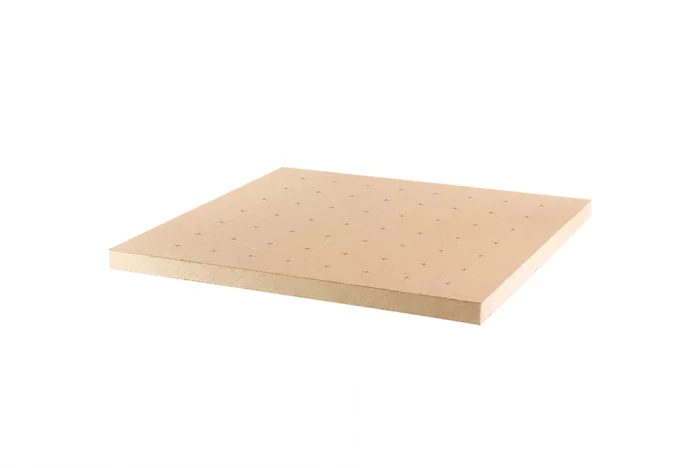
GAF’s EnergyGuard NH Polyiso is the only brand I know of that uses a halogen-free flame retardant, which is phosphorus-based. GAF’s former director of sustainability, Martin Grohman, has said that this phosphorus-based flame retardant is bonded to the polymer, so that it can’t leach out, whereas TCPP is not chemically bonded to the polyiso foam and can become free (source). This makes EnergyGuard NH a much safer option, at least during its intended use.
Incidentally, Johns Manville Energy 3E was another brand that was made without TCPP but the product is no longer made. The manufacturer said the flame retardant was phosphorus-based and non-halogenate.
ZIP System R-Sheathing is the Huber Zip OSB sheathing, polyiso, and weather-resistant barrier all in one. In this case, the polyiso is on the interior side of the sheathing, and the flame retardant is TCPP.
I would still consider polyiso in a green home because the foil backing used on most polyiso boards does block the migration of flame retardants from two sides, and the use of the insulation on the exterior of the envelope also mitigates the risks. It has a fairly low GWP (at least compared to XPS). The only brand of polyiso I would go with is EnergyGuard NH due to the safer flame retardant.
Extruded polystyrene (XPS)
XPS is another exterior insulation used outbound of the sheathing. It is also used on exterior basement walls, under the slab, and on roofs. XPS, like polyiso, is a closed-cell foam that has some extremely slow offgassing of the blowing agents over time. Over the course of 50 to 75 years, the blowing agent diffuses through the foam and is replaced by air, according to this article by Martin Holladay, in which he discusses the R-values of closed-cell foam boards.
Typical blowing agents for XPS are CFC-12, HCFC-142b, and HFC-134a. There have been recent shifts away from the highest GWP HFCs. Eleven states have banned foams blown with HFC-134a (GWP of 1430) and other high-GWP blowing agents, including HFC-245fa, as of January 1st, 2022. Canada also created a maximum GWP for foam blowing agents.
Owens Corning doesn’t use HFC-134a anymore; they now use a hydrofluoroolefin (HFO) blowing agent with a GWP of less than 80. DuPont now offers a reduced GWP foam available in Canada and HFC-regulated U.S. states. The blowing agent is not disclosed. They say that the GWP of the blowing agent was reduced by at least 20%.
Flame retardants are also a concern. XPS insulation was treated with the flame retardant hexabromocyclododecane (HBCD) until recently. The two main brands, DuPont and Owens Corning, no longer contain HBCD. Most are now using a butadiene styrene brominated copolymer as the flame retardant, which has a better toxicity profile than HBCD.
While XPS still has a higher GWP than the other two foams, the new formula by Owens Corning is not that far off from the others. If a build requires foam board and the other two options can’t be used or sourced, the Owens Corning brand makes sense.
Expanded polystyrene (EPS)
EPS can be used as exterior insulation, on interior concrete basement walls, and sometimes under the slab. It’s also a common insulation in travel trailers, where it’s usually referred to as “block foam.” Typically, EPS is made with pentane, butane, and/or carbon dioxide as the blowing agents, which are replaced by air quickly after the product is manufactured.
EPS, despite the name polystyrene, does not offgas styrene under normal conditions. It is considered zero-VOC; and pentane and styrene are not exempt from the VOC ratings. The main concern here is the flame retardants. EPS used to be treated with HBCD, but like with XPS, manufacturers have transitioned to a butadiene styrene brominated copolymer. Some EPS is treated with borate because ants do love to make a home in it.
For green homes, EPS has been traditionally preferred over XPS due to the GWP. Now its environmental specs are comparable to EnergyGuard NH brand polysio and not too far off from Owens Corning’s XPS, which has a higher GWP blowing agent but the same flame retardant.
Cork
Thermacork insulation, unlike cork flooring planks, does not contain any adhesive or any other additives. It is held together by compressing it with heat, which releases a natural binder in the cork. The cork does give off a smoky smell, but that dissipates with time. It can be used as roofing insulation, exterior insulation outbound of the sheathing behind a rainscreen, or as the facade of a house, which serves the purpose of siding, thermal insulation, and noise reduction in one.
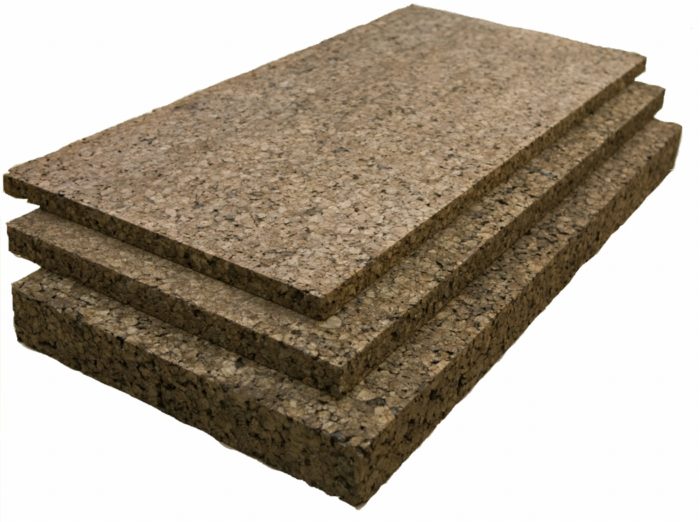
Trees are not cut down when harvesting cork, which is sourced from sustainably managed forests that are habitat for many species; these forests are also carbon sinks that capture CO2 and greenhouse gasses. And, of course, being only bark, it’s biodegradable.
This is the only one-ingredient product on this list, and in that sense, it is the purest. It’s my top choice for board insulation. It just doesn’t get any greener than this. The only downside is the high cost.
Mineral wool
My second material choice for board-form insulation is mineral wool. The small amount of formaldehyde and the trace metals become even less of a concern when used on the exterior of the building. There are no persistent flame retardants or other chemicals of concern.
Wood fiber
Wood-fiber board is often used in high-performance and Passive House designs for floors, walls, ceilings, and roofs. The most popular brand is Gutex. It is 95% wood, 4% polyurethane, and about 1% paraffin. The total VOC level is 187 μg/m3. I do not consider this low in VOCs, and it would not be the ideal insulation inside the building envelope but the benefit is there are no long-term persistent chemicals. Once the polyurethane offgasses, this product is a solid choice. It’s also recyclable.

The short list
In summary, my top picks are mineral wool batts because they are fast to offgas and fit snugly in between framing, which reduces air leakage. The fact that this is also the most popular insulation in mid- to high-ends homes makes it an easy choice.
Hemp insulation is a promising new insulation and I think we should support this development.
Blown-in mineral wool and sheep’s wool are the two options here with very few additives. There are no flame retardants and no offgassing. These are not the most common blown-in choices, but I do think they are preferable over fiberglass and cellulose.
Cork board insulation is an incredible product for human health and the environment. The cost will probably keep it out of most builds for now. Mineral wool boards are also a great choice, and I have no concerns when they are used on the exterior or under a slab.
All foam boards have their challenges. They contain toxic flame retardants to various degrees, and some have a high GWP. Sometimes they still are specified, so the newest improvements in GAF and Owens Corning brands are a good thing.
*Sponsors are not offered the opportunity to review articles before publication or to edit our authors’ words.
_________________________________________________________________________
Corinne Segura is a green building materials specifier and writer at mychemicalfreehouse.net. Photos courtesy of manufacturers.
Weekly Newsletter
Get building science and energy efficiency advice, plus special offers, in your inbox.
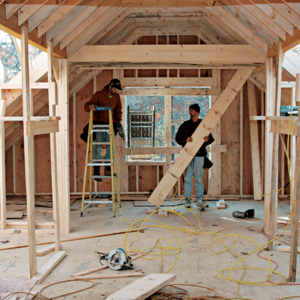

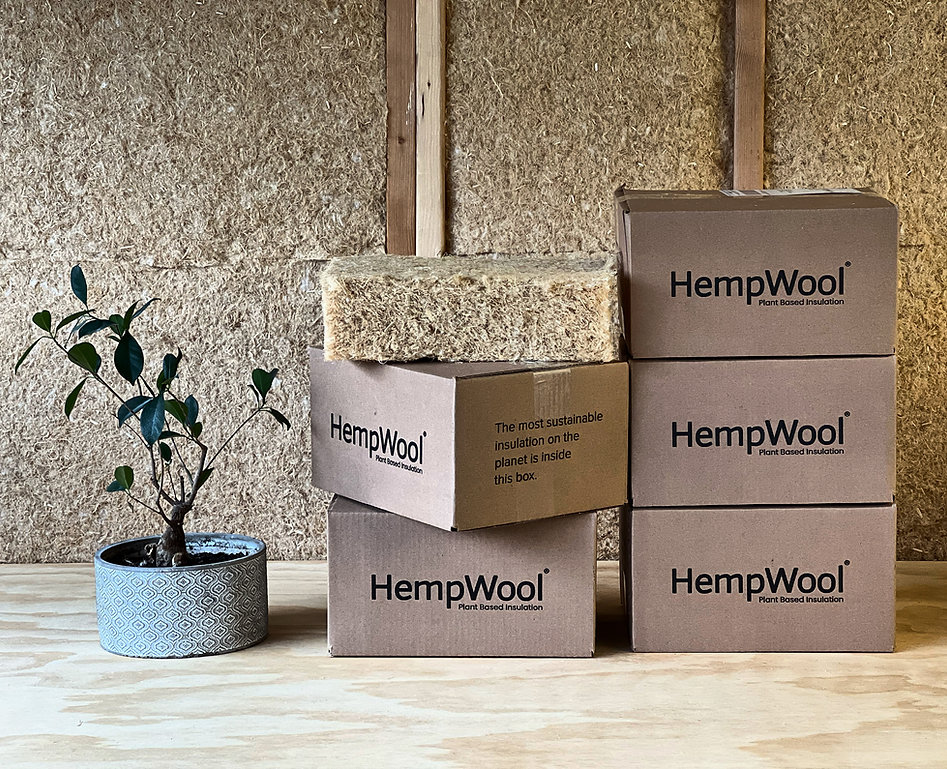
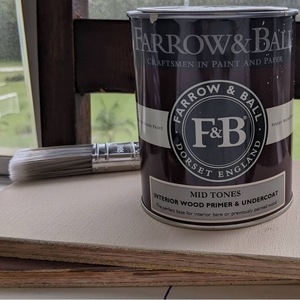
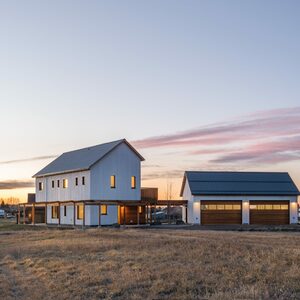
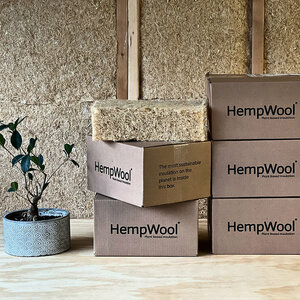
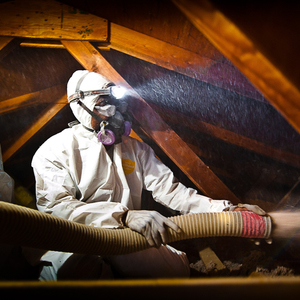






34 Comments
Of all the insulations cellulose is by far the greenest and the cheapest. That's a pretty good combination. It does require expertise and equipment to install well. But as a DIYer I successfully installed it with equipment anyone can rent from the orange box store. I found that the article was very slanted and incomplete even if the author did just use her preferences. We all have preferences. However, we all don't have unlimited funds, and statistically very few of us would ever have chemical sensitivity to cellulose when it's behind a wall of drywall. I think that may have been a misplacement of priorities in favor of rockwool even if it was the author's priority.
I think you may have been a little harsh, but you make some good points.
We use blown cellulose in a lot of applications, but always make sure that we are using an airtight membrane on the interior side to help protect occupants from any risk of toxicity. This airtight membrane should also be vapor variable so that the celullose doesn't go through frequent wetting and drying cycles, which will cause settling.
Cellulose is by far the least expensive low carbon or carbon storing (depending on the brand) insulation material. In addition, the relatively high degree of thermal mass is really useful in climates where there are large diurnal temperature swings.
I am hoping to do my own blown in cellulose in the house I am building. Did you dense pack with a rented blower? or was it loose fill in an attic?
I wrote the article before GBA created the sponsored relationship with Rockwool.
I've had the same conclusion on my website My Chemical Free House for many years and there is no personal sponsorship with Rockwool on MCFH. In fact, I have an affiliate relationship with a competitor and if I wanted to make money I'd be promoting the competirot on MCFH. I actually take a hit to say that I think Rockwool is the best instead of the one that pays me for sales. Also I believe I'm the first to point out the negatives in print.
@corrinesegurra,
I now see the problem in the presentation of your article. I would change the title of "Insulation for Green Homes" to "Insulation for Lowest Impact on Occupant Health" That would then concur with the results in your article. It's both unfortunate and unlucky for you that the twin occurrences of a misleading title and a retroactive sponsorship by Rockwool caused me to suspect your motives. Life can be complicated.
My focus and expertise is definitely more on human health.
“[Deleted]”
“[Deleted]”
Like exeric (don't see his original post anymore), I initially assumed the author was employed by Rockwool, which made me question the objectivity of the article. Kiley's and Corinne's replies quickly cleared that up, but I don't know what to what to make of Rockwool's sponsorship. Does that imply that they have some subconscious editorial influence? We have only GBA's integrity to rely on here, which has been exemplary in my view. I'm still a little uncomfortable with the idea of sponsored articles. Maybe a brief editorial note at the top of the article identifying any relationship--or lack thereof--between the author and sponsor would be helpful.
That said, I found the article packed with useful information. What especially struck me was that the health and safety factors surrounding any building product were often tied to additives needed to make the product usable, things like binders, flame retardants, and blowing agents, as much as to the base material itself. These additives have evolved over time, and continue to evolve.
I followed the link to Corrine's website and found a wealth of timely information there too. The focus, as she stated, is on health factors. A good complement to other resources, like Builders for Climate Action, who focus more on emissions and carbon accounting.
You make some great points Don and thanks for posting. I wrote one of the articles in this series (titled "5 Factors of Good Building") and didn't know Rockwool was sponsoring the article until after it was posted. It was a mildly unpleasant surprise since I'm not a huge fan of mineral wool insulation in general. I consider it to be "best of less bad" or "bottom of good" in our approach of assessing materials for our projects. Anyhow, I can confidently tell you that Rockwool had zero input on anything I wrote and I trust that is the same scenario for all of the articles in this series.
I agree. I'm uncomfortable with GBA posting sponsored material. From the author's comments, this article in particular is apparently free of corporate marketing material. However, I see no reason to assume that in general.
If I can't trust that the articles are unbiased, I'm not sure what I'm paying for.
EDIT: I figured it out; access to the archives.
I'm copying my response above to Don so that you will see it:
"You make some great points Don and thanks for posting. I wrote one of the articles in this series (titled "5 Factors of Good Building") and didn't know Rockwool was sponsoring the article until after it was posted. It was a mildly unpleasant surprise since I'm not a huge fan of mineral wool insulation in general. I consider it to be "best of less bad" or "bottom of good" in our approach of assessing materials for our projects. Anyhow, I can confidently tell you that Rockwool had zero input on anything I wrote and I trust that is the same scenario for all of the articles in this series."
Thank you for the article. I'm very curious about some of these alternative insulation products. A couple of questions:
Do you have any estimates of cost and availability? Sheep's wool in particular is one I'm curious about, but for all of them, it's hard to get a read on pricing and if this is a realistic possibility for my house. And realizing that pricing varies by region and over time, I wonder if it's possible to talk about relative pricing. E.g., if Fibreglass costs X per sf of coverage in a 2x6 cavity, then Sheep's wool costs 3X or whatever the case might be.
Second, are you aware of any testing done on some of these products, especially as it relates to insects? The insects in North America are very different than those in Europe, and I worry that as we import materials that work well in Europe to NA, they might not fare as well against North American bugs. E.g., how does Gutex deal with Termites or Carpenter Ants? How does Hemp insulation or sheep's wool actually stand up to indoor insect activity? Etc.
Thank you!
The costs have definitely been changing over time, and not to mention pandemic effects on pricing. When I started writing about insulation Rockwool (Roxul) was double the cost of fiberglass, now in an article in GBA from 2021 it's 1.6 to 1 rockwool t0 fiberglass.
Havelock brand sheep's wool has scaled up a lot during the last few years. So if we see inflated prices due to pandemic issues in other brands, and another smaller brand is scaling up, it really changes the ratio. Havelock is $1.50 per s/f for batts for a 2x4 wall, while Rockwool is 1$ per square foot at the highest cost (consumer price, no bulk or contractor pricing).
It's also tricky to compare because the price of wool might hold steady whereas fiberglass and Rockwool come in at different prices based on consumer prices, contractor prices and big developers' prices.
I only specify materials based on working with the homeowner on their preferences (with only general ideas of what is more or less costly) and I don't do the cost estimating. So I'm sure a contractor or cost estimator can do a much better job at this question than me.
Thanks!
Any thoughts on the insect issue? I love natural materials, but so do other living things it seems, and I worry a lot about insect damage to natural materials. And beyond vague statements from the manufacturers saying their products are insect resistant (whatever that means), it's hard to find any real evidence one way or the other.
Maxwell_mcgee,
That's an interesting question. Among the conventional choices, the material I've has the most damage to from insects and rodents is foam. Mineral wool, both fluffy and rigid seems to offer some protection against insects, but isn't significantly better with rodents. I'd be interested to know how Glutex and Hemp fare too.
I'm sorry I haven't looked at the studies for pests. I have also had the problem with ants and foam.
I believe there's good information here, thank you. I also think that more information on general costs, installation practicality and availability for different kinds of insulation would be helpful.
Not all insulations are suited for all and every application, and not all insulations are available nationwide.
Hi Armando, the unusual ones ship nationally from online retailers (Hempwool, Thermacork, Havelock Sheep's wool and Gutex, though Gutex is back-ordered that's more of a pandemic problem I believe). I tried not to mention anything that is really obscure and hard to find. But the formaldehyde-free versions of Rockwool and Thermafiber can be hard to find.
Corinne,
A while back I was interested in trying Ecocell's cellulose batt. It's generally unavailable for most of the country. Do you know of another cellulose batt?
Hi Kyle, oh ya that one is an unusual one. I added it for thoroughness, but no, I haven't seen another cellulose batt before.
GAF EnergyGuard NH Polyiso seems to have a remarkably low R-value for polyiso at only R-5.7/in. It may be "greener", but it's an objectively worse insulator than nearly any other polyiso.
That's still a very high number. Given that some polyiso has severe drops in R-value at low temperature, I would be more concern about the temperature dependence and long-term stability of that number. It could be better than others in practice. Unfortunately, their datasheet only specifies R-value at two temperatures, with the lowest 40 F.
The "sponsored" article definitely had me questioning the information and wondering where the motives were.
This was the first time I questioned the motiives for information provided on GBA, which is very disappointing. I will certainly consider this when deciding to renew my subscription.
I hope GBA is listening.
FWIW, the current SDS for Greenfiber's Sanctuary line of cellulose insulation has a somewhat different (and shorter) list of ingredients than the author describes. In addition to 85% newsprint, there are four other components listed: boric acid, gypsum (calcium sulphate dihydrate), amylopectin (a component of starch), and mineral oil.
Greenfiber Sanctuary is the brand carried by at least one of the big box stores, so readily available. Having worked with the product, it appears a fair amount of the newsprint has been replaced with shredded corrugated cardboard and/or other kraft paper products, I assume due to the increasing scarcity of old newsprint in recycling streams. Perhaps that alleviates some of the author's concern over newspaper ink in cellulose insulation.
Thank you for this update
In terms of human health, the article misses the opportunity to reveal the health impact of manufacturing. This is particularly frustrating when the products of the sponsor are less than appealing. This fact would be supported by Rockwools latest North American facility in West Virginia. The county that Rockwool now calls home used to be the least polluted (defined by regulated air pollution permits in the State) of the 55 counties. Jefferson County can now claim the 2nd most polluted county due to one plant.
Just a note that health concerns don't disappear when you step outside of your "green home".
This is yet another example of GBA doing a disservice to the building community. Not only is the writing in desperate need of a healthy dose of editing to be readable, but the bias of the author is clearly on display. The thesis isn't matched by the body of the article. The content and analysis of each material is not consistent across the selections. The conclusions are speculative, or personal rather than tied to any actual standard or measurement. How the author feels about the levels of formaldehyde are irrelevant. Jordan Peterson uses big words to sound smart while mixing subjects and twisting sciences to make a biased point. This article is no better. Each of these products has an EPD which the author could have read and presented apples to apples comparisons on embodied energy, GWP, and chemical composition. Rocks don't turn into fibers without a little help. Cork doesn't harvest itself. Foam composition varies greatly from manufacturer to manufacturer, and it is misleading to make statements about what product a manufacturer offers (lower gwp) without including the product they make that is best (nearly zero gwp). This is worse than the "is OSB an air barrier" article, which was equally misleading and bias. Knock it off already GBA. (and can we please leave bau-biologie stuff in the crystals, healing energy, ant-vax, psudo science nonsense in the garbage where it belongs.)
Michael,
I'm not sure your comment adds anything useful to the discussion here. The accusations of the author here are unwarranted, as this article is intended to be little more than "these things exist that you may not have heard about before". There's nothing nefarious about listing products. To detail all the information you request would require nothing short of a small thesis, and would certainly be passed over by most readers just getting started.
Foam composition does not vary greatly from manufacturer to manufacturer - at least not when it comes to the chemicals of concern like flame retardants. Blowing agents vary a bit and I did outline the best in category for each one.
Michael, I disagree with you and find your comment to be rude. I have known Corinne for years and recommended that she write for GBA because she has done a lot of research on the health impacts of materials, especially as relates to multiple chemical sensitivity. Having done a lot of research and writing on different types of insulation myself, I found this article to be comprehensive, fair, well-researched and well-written. It is written as a primer and to be accessible to non-technical people, which is a challenge I think she met nicely. Corinne does include some personal commentary but only enough to help people understand points that would be lost in a list of specs. Anyone can find and list EPDs and LCAs, but they don't make for a readable article. Authors rarely choose their own title.
The only factual mistake I see is that cellulose insulation is usually made with a mix of post-consumer and post-industrial (pre-consumer) newsprint, not all post-consumer as she wrote.
Constructive criticism is important. It's also important to do it in a respectful way. Your entire comment is disrespectful to Corinne and to GBA. lf you have an issue with a specific assertion, back it up with a fact, not an insult.
I was hoping to read more updated info about the Kingspan cooltherm line of foam board which seemed like it was here to stay.
I'm surprised fire class ratings and product densities aren't mentioned. Also, 2019 article "In Favor of Wood-Fiber Insulation" states wood fiber has zero VOCs. Is it just the European brands that have them or does Go Labs TimberHP need further testing?
“[Deleted]”
Log in or create an account to post a comment.
Sign up Log in